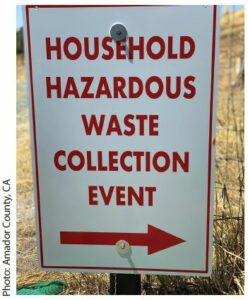Written on: March 1, 2023 by Nicholas Georges
There’s been a significant spotlight placed on packaging waste over the last few years. Government and other stakeholders have introduced legislation and regulations that require companies to make significant changes to their packaging, especially related to sustainability and cost. However, some of these changes have sparked concerns about formulation compatibility, labeling and transportation.

One of the key indicators of a product’s sustainability profile is whether its packaging is reduced, reused or recycled. Most products are designed to be recycled, but that doesn’t mean they are accepted in all collection and sortation processes—or even that there’s an end market for the material once it’s been processed.
Extended Producer Responsibility (EPR) laws have received significant attention in the U.S., as more States use EPR as a policy tool to manage and reduce the amount of consumer waste by placing the bulk of this responsibility on the producers. Post-consumer recycled (PCR) content laws, whether as stand-alone legislation or combined with EPR, are also being utilized to aggressively create and drive markets for recycled materials.
One area that will start to receive more attention in the not-too-distant future is the handling and disposal of leftover products. In the household and commercial products industry, products are designed to be used until there is nothing left. However, we’ve all disposed of a product before it’s completely empty, so what is the average consumer supposed to do?
In commercial, institutional and industrial settings, leftover product could be hazardous due to certain properties that make it dangerous to human health or the environment. Under the Resource Conversation & Recovery Act (RCRA), the U.S. Environmental Protection Agency (EPA) has developed regulations for the management of hazardous waste based on whether the discarded material exhibits one or more of the following characteristic properties: ignitabilityi , corrosivityii , reactivityiii or toxicityiv. The EPA also maintains four lists of waste—Fv, Kvi , Pvii and Uviii —that are hazardous based on common manufacturing and industrial processes.
For certain commercial hazardous wastes, the EPA has developed universal waste regulations that ease the burden on the regulated community and encourage the development of municipal and commercial programs that reduce the quantity of waste going into local landfills or combustors. Aerosol cans were addedix to the list of universal waste in 2020, and to date, 35 U.S. States and the District of Columbia have added aerosol cans to their universal waste programs. The Household & Commercial Products Association (HCPA) continues to advocate that other States do the same, and we expect more rulemakings in the next couple of years.
However, this is different for leftover waste generated by consumers. Under RCRA, household hazardous waste (HHW) is exempt, in part because there’s no practical way for the EPA to regulate every household as a waste generator. Even so, it’s critical that HHW is properly managed, not just for the safety of the user, but for the safety of those that collect and handle recyclable material or waste going to the landfill. For instance, in 2022, material recovery facilities (MRFs) reportedxmore fires than any previous year—and that doesn’t include what else these workers may be exposed to.
Many communities have HHW collection programs throughout the year and some even have permanent drop-off programs, allowing consumers to properly dispose of their HHW. However, there are a few challenges with these programs. Like recycling programs, HHW programs vary community by community, having different sets of collection requirements and management rules. This causes confusion among consumers and usually results in them just taking the easy route and throwing the product in the trash.
Many of these programs are also facing financial challenges because they are costly to manage. As a result, the number of collection days could decrease or consumers could have to travel further to dispose of their HHW. In order to be effective, an HHW must have a consistent collection schedule, standardized requirements and rules that are accessible and understandable.
The Vermont legislature is exploring an HHW proposal to address funding shortfalls identified by local solid waste districts. The proposal is modeled on a construct championed by the Product Stewardship Institute wherein Industry would be responsible for fully funding HHW, but it would be controlled by the Vermont Agency of Natural Resources. The HCPA and allied trades are negotiating potential solutions to the funding shortfalls. The industry can expect HHW measures to be introduced in legislatures across the U.S.
The safe use and disposal of consumer and commercial products is of the utmost importance. To stay up-to-date on all legislative and regulatory activities around recycling and HHW, please contact me at ngeorges@thehcpa.org. SPRAY
i 40 CFR 261.21
ii 40 CFR 261.22
iii 40 CFR 261.23
vi 40 CFR 261.24
v 40 CFR 261.31
vi 40 CFR 261.32
vii 40 CFR 261.33
viii 40 CFR 261.34
ix link
x Fogelman, Ryan. 2022 Officially the Worst Year for Waste & Recycling Facility Fires. Dec. 5, 2022. link